|
For more Behind-The-Scenes of my painting process, exclusive deals, and my full catalogue of finished works, visit my Patreon.
0 Comments
In my deep studies and dives into mixology, I am often delighted at the affirmations of my insights and gambles. It seems, most of the time, I have a decent idea of what I am doing, and there is no other feeling quite like setting aside the chemistry of a drink's draft before research and celebrating your apparent genius after. And though this practice fosters a keen and sharp wit and confidence in the subject, it can also drive the hooks of hubris deep before wrenching you to the floor. There is much still to learn, grasshopper. Bloody PiratesThe chemistry of liquor could be argued toward an exact science. Parts and ratios, surgical measurements, yet loose enough to garner such phrases as "a dash" of this or a "splash" of that. There appears to be some arcanum in play as well, at least among the most pure. There are garnishes, and smokes; matches and incantations; so much that one believes flailing an orange over a glass gives it just the right "touch" of citrus. And when I'm not casting spells to make things delicious, I am ruminating on the curious cavalcade of cutthroats and pinchpurses that just cannot seem to get along, no matter how many times I force them onto the same boat. Let's consider what I call "Morgan's Fleet." No liquor is created equal, which is why offshoots like Lady Bligh (sweeter and mild) exist alongside Admiral Nelson (bright and sharp), with Captain Morgan the original reference point of rum. Kraken leans between Morgan and Nelson, and the ever-surprising Oakheart lends a slightly earthy tone between Morgan and Bligh. The CLEARLY Bligh clone of Blackheart Rum leans heavily beyond Bligh, too smooth for her own good. Each of these rums on their own serve well in simple pairings, and can be quite tasty in these realms, elevating them to a mansion of high class. ...Put them in the same room, however, and they draw swords and kill each other, leaving behind essentially dirty water. What I mean is, in my first attempt at crafting what I professed to be "my strongest drink" (a feat I believe has already been achieved in the form of the Incubus, go figure), I thought it would somehow be a good idea to blend all my favorite rums together. So I took some Bligh, some Morgan, some Kraken, a little Oakheart, and a splash of Blackheart. ...It was devoid of all flavor. It left my tongue NUMB in boredom. So I tried again. Morgan, Bligh, Kraken. Nothing. All flavors nullified. Morgan and Bligh only? There's flavor, but it has no heart. Frustrated, I put the concept away. I had a campaign to run and plenty of other drinks to write about, so no worries. Flash forward a few months to the second week of teaching in the odd-as-hell Hybrid Model as a music teacher and I'm conceptualizing the conflicting flavors in a dose of my FIREWATER, a drink idea that's been rolling around for some time. It starts simple - a double shot of Fireball (makes sense, but if I don't like it, I've got After Shock to help out), then about a 1/2 oz of Lime Juice for some citrusy bite. Adapting from an old idea, I call in an ounce of Vodka (hmm), a quarter ounce of 151 Rum (HMM), and an ounce of...Captain Morgan. The initial sip is a blastoise cannon of Lime, all semblance of rum or vodka GONE from the mixture. A hint of Fireball lingers in the wings, and the warmth is there (one of the targets of the draft), but after a second sip ALL I TASTE IS LIME. Where'd my pirate go? What the hell happened? It is my understanding that if Spiced Rum is one of the core liquors in your drink, that you use only ONE RUM. The second test craves that citrus, but without the Lime, so I have some swapping to do. I propose the following changes: TEST #2 Switch out the Vodka for Gin, and omit the Lime juice completely. X out the 151, and keep the Captain on standby for a splash or two if needed Fold in 1 oz of Jamaican Silver Rum Add in 2 dashes of aromatic bitters The Experience The Gin is precisely what this drink needed. The subtle citrus quality makes the Fireball a bright, shining, cinnamon sun. Bitters bind the Silver Rum into the fold, so no need for the Captain...but something's still missing. Alas, this one is far from done. Silver LiningsThough I've been pretty lucky so far, not every drink is a knock-out, and there are splendid lessons to be found in our hilarious "mistakes."
While dumping out the poor wasted liquor of the first test, a quick sniff of the glass elevated that sense of fire, like I had "rinsed" it with Fireball. I was looking for something light and easy to cleanse my palette and I reached for my Stella Rosa Pink (carbonated, light, sweet wine). Pouring just a touch into the glass, the smell (and resulting taste) was transcendent without carry; light, but satisfying. So I ventured further. I don't want to sacrifice what the Pink brings to the table, so just a half ounce of Fireball in a whiskey glass, and fill it up with Stella Rosa Pink. It is lovely and bright; warm at the back and sweet at the front. Both for its color and profile, I name her my Ladefyre, and she is lovely. Taste and toast well to what you are thankful for in this crazy world. See you at the Bar. -Adamus There is a doctrine that persists from the Old Times; hissed from the corners of the amaranth and amalgamate souls trapped forever in the ether... "You don't mess with a good Scotch." Welp. To hell with that! As I've begun to cultivate a new love of Scotch whiskey, I undoubtedly have fallen down the rabbit hole reserved for so many previous palette discoveries to satiate an aching question: What goes well with Scotch? Simple PairingsThough I was never one to throw a punch in a bucket and see what sticks, drowning out any semblance of flavor with an excess of Gin and Vodka (sighs in college), the urge to blend new loves with old ones still calls to me. What are those old loves, you may ask? Well, Disaronno (fine amaretto), Drambuie, Fireball, and Angostura Aromatic Bitters. And, after a little research, turns out those old loves already had their honeymoon pairings in two separate homes. You might recognize the classics: The Rusty Nail and The Godfather. THE RUSTY NAIL 1.5 oz Scotch whiskey 3/4 oz Drambuie Pour over ice and enjoy THE GODFATHER 1.5 oz Scotch whiskey 1/2 oz amaretto liqueur Pour over ice and enjoy ...Or be a heathen and some Coca-Cola and enjoy anyway! Upon learning this, I was bolstered by my past cultivation and skillset and set to work making my own "gentleman's drink". The Den MasterThis one's all mine.
Take a nice whiskey glass and put 3 ice cubes in it. Then, pour the following over the ice in this order. 1) 1/2 oz Drambuie 2) 1/2 oz Wild Moon Birch Liqueur 3) 1 oz Disaronno 4) 1/2 oz Fireball 5) 2 oz Dewer's Scotch 6) 4-6 dashes Angostura Bitters Swirl the glass and sip away. No soda needed. I like the bright bite of the Dewer's Scotch, mitigated by the syrupy sensations of the Drambuie mixed with the subtle Birch. Fireball, Disaronno, and Bitters are a match made in Elysium. So if you're down for a cloak, a dagger, and a gentleman's talk, come join me at the table. -Adamus While we were out tempting fate and stupid people that can't wear masks in NY, my in-laws bought for me some red wine that they professed was "sweet like Stella Rosa." Well, considering that most of Stella Rosa's award-winning libations are carbonated and based on more fruity striations, a "sweet red" would not suffice. Sure enough, though it wasn't bad, this "red" wasn't really up to snuff in either direction. And before you get on your snide horse about the merits of my Stella versus you Pinot, you can shove it. We took the wine home with us, and it sat in our fridge for awhile. Still hopped and hankering for something to do with it, I did the UNTHINKABLE. I poured some in soda and took a sip. KalimotxoTurns out blending wine and cola has been done before. Branching paths bled out from the origins of Sangria and gaining A LOT of popularity in the 1970s, messing around with soda and wine ain't nothin' new, no matter how weird it may sound. To make the original Spanish version of this drink, called the Kalimotxo, you'll need some red wine and Coca-Cola. Mix 1 part each and enjoy. Three Variations On A ThemeNot one to let the red cap lie, I continued down this rabbit hole and tried this three more ways.
BENJIN'S BINGE 1 part White Wine 1 part Sprite 1.5 oz Vodka RAYPH'S RIPOSTE 1 part Red Wine 1 part Ginger Ale 1.5 oz Gold Tequila IZZY'S IXTAPA 1 part Stella Rosa Black 1 part Dr. Pepper 1.5 oz Amaretto Yes. These three variations are indeed based on a trio of bounty hunters from the first campaign of Gray Owls. Yes, only one of them is still alive. ...That has nothing to do with the quality of these drinks. I promise. No. I will not share which one of these three lived. Because you shouldn't be worried. Seriously. Nothing to worry about. Stop asking. Enjoy your dumb wine. -Adamus One of the dimensions we can explore in Dungeons and Dragons is identity, and who we choose to be when we assume the mantle of a character in a fantasy world. We get to choose how our characters behave, talk, and fight, and determine how much of our real world persona expresses itself through the course of gameplay. Sometimes our characters are goofy parodies of some storytelling archetype, and sometimes our characters are dramatic emotional portraits of our own personal growth and development. Arguably, the most impactful way a player can contribute to the narrative at the table is through their character’s mechanics, which a player chooses and customizes as their character levels up. Even creative solutions and descriptions are usually resolved through some kind of game mechanic. For example, haggling with a merchant, no matter the description, will probably require some kind of Charisma check, or be circumvented through a clever use of a spell or feature. All three of these solutions are mechanical in nature, and handled by 5e’s system. A player usually has the ability to customize their character’s mechanical identity through three major choices: race, class, and background. The first choice, race, accounts for a character’s biology and cultural heritage (whether they subscribe to it or not). A character’s class determines the character’s main features and choices, summarized in the Player’s Handbook as “Class is the primary definition of what your character can do”. Background is the last choice, and it provides small mechanical benefits that are tied to who your character was before the start of the story. Of course, a player can also customize their character’s appearance, personality, accent, and mannerisms, but there are (for the most part) no real restrictions in these categories. However, although these character elements have little restrictions, they can also have little impact over how the story unfolds beyond aesthetic. For example, even if you describe your character as being attractive, that doesn’t affect their ability to persuade others. That game interaction is handled by their Persuasion bonus, a game mechanic. So while we as players are free to describe our characters aesthetic, the meaningfulness to how they contribute to a narrative is left to the game mechanics, and it’s that contribution that also contributes to a character’s identity. However, despite having control over their character’s personality, race, class, and background, there is one category of identity-defining mechanics that players tend not to have control over: their equipment progression. Beyond starting equipment, players are often subject to the whim of their DM of when they’re given magic items, what items they’re given, and how many they’re allowed to acquire. While the Dungeon Master’s Guide presents guidelines on this, oftentimes a DM defaults to a treasure table, which may or may not yield treasure that can be used by the party. Even moreso, magic items of equivalent rarity don’t seem as balanced as other objects in the game state, such as same-level class features and same-level spells, so the likelihood of a DM giving an item of inappropriate power (either too much or too little) is greater. Now, there are a great deal many players that prefer this approach. There’s an excitement to the mystery of receiving random items that can yield spontaneous stories, and I’m not suggesting to discount that option if that’s what your table prefers. In fact, oftentimes finding an unconventional magic item can become as much a part of a character’s identity as their race, class, and background. So, if a random magic item might yield that result, could giving my players the option of choosing their equipment allow them to become more intentioned in defining their character’s identity? What becomes possible if their equipment levelled up with them, just like their class features, and what if they could choose how their character’s identity is expressed by their equipment? What would their choices reveal about their characters’ values as well as the players’ values? And, if I’m the one responsible for giving these choices, how can I create a more satisfying approach like class levels where every character is on an even playing field, and martial characters are just as interesting and powerful as casting characters? Before we get too far down this rabbit hole, I want to give credit where it's due. This design philosophy of having equipment that can level up is not new. One of the most brilliant examples of a balanced, customizable equipment system is the one seen in Final Fantasy VII Remake. Whereas the original FFVII had different equipment options that grew stronger as the game progressed, Remake did something truly brilliant. When a new weapon became available, it was generally as powerful as your starting gear, but offered new options that may be more appropriate to different situations. In addition, every piece of equipment could be upgraded, from the amount of damage and protection it offered to granting your character new options in combat. This was the kind of hands-on upgrading I wanted to bring to D&D, and so far, it’s worked really well. But why? Game Structure MattersIn the two sections following this one, I’ll detail the two systems I use to allow players to customize their equipment. While I do believe they’ve so far been pretty successful, I attribute a great deal of that success to the structure of the games I run them in. For example, each adventure is conducted like a one-shot, in that there’s a clear beginning, middle, and end to each story, even if there are open loops that can serve as future plot hooks. All players are at a set level, and each one has a set number of upgrades and spell gems they’re allowed to build into their character. Between sessions, players are welcome to rebuild their characters (as long as they keep in contact with me), which gives a certain freedom to fine-tuning the character they want to play. Most of the time, any adjustments are minor, like swapping out a spell or two or swapping out a feat for an ASI. As would be expected, part of this rebuilding rule is that players are also allowed to rebuild or swap out their equipment. Whether my players are motivated by storytelling or mechanical performance, this freedom let’s them experiment with different options without ever feeling stuck with a certain character, and play is always a “get to” rather than a “have to”. Ultimately, my point here is that if you use these systems and don’t allow your players to freely rebuild, it may impact their enjoyment of the system. If you let some of your players rebuild or use these systems and not others, the same warning applies. Right now, each of my players knows that for their next session, their characters are at 6th level, and they can upgrade their equipment with 3 upgrades (which can all be to the same weapon, spread to three pieces of different equipment, or any combination), and they have two spell gems they can use to make their equipment magical. There are some options that are designed to work better for martial characters, and some that are designed to work better with casters, although characters aren’t limited by anything other than their proficiencies. Everyone has the same number of choices, and so the onus is on each individual player to make the most of the options available to them. Okay, so now that’s out of the way. Truly, without further ado...Upgrades and Spell Gems! Upgrading EquipmentUpgrading Equipment is a system that allows players to customize the function of their equipment without making it magical. It covers everything from statistical benefits, material composition, and properties. I have a prepared list of available upgrades for my players to choose from based on their power level, although if my players have a creative idea for an upgrade, they’re always free to ask me if I can write rules for what they have in mind. The first kind of upgrade is statistical improvement, which ends up being the most sparse. Players can choose to upgrade a weapon’s attack bonus or damage bonus per upgrade, and depending on their tier of play, they have limits to the total bonus they can unlock per piece of equipment. For example, a fighter with a pike can use two upgrades to give that pike a +1 bonus to attack rolls and damage rolls, or they can choose to spread those upgrades out over a few different weapons. Each player only has a limited number of upgrades, so they have to carefully consider how they spread them out and sometimes raw statistical power isn’t as interesting or as desirable as some of the other options. Another option is that players can use one of their upgrades for a piece of equipment made of an exotic material. In my latest game, because I have so many creatures with a vulnerability to silvered weapons, a few of my players have opted to forgo a steady statistical bump (like to attack or damage rolls) for a silvered weapon, which deals double damage to many of the monsters in the world. However, silvered weapons also break more easily, meaning that they have to be careful when and how they’re used. There’s potentially a greater reward for using the weapon, but also a greater risk. To me, the most interesting upgrades are properties, some of which are listed in the standard equipment tables for Fifth Edition. An example is the finesse property, given to some melee weapons to indicate that a character wielding the weapon can use Dexterity instead of Strength for attack and damage rolls. Using an upgrade for a property allows a player to customize the function of their weapons in relation to their class features, so a Monk/Rogue multiclass can customize their longsword to count as both a monk and finesse weapon. In addition to some of the standard properties, I’ve also included other custom properties, like being able to attack a grappling hook to your character’s armor, or creating a hidden compartment to hide items and spell gems. In addition, because they can rebuild session to session, as the DM I’m free to change the environment’s impact on these decisions as well. For example, in one of my latest games, I had my players traverse a desert. One of the ways they could avoid having to make a saving throw against exhaustion was to take the breathable upgrade to their armor, which also meant they had one less combat option on hand in case they needed to fight. Or, they could’ve taken a spell gem that would’ve prevented them from having a magical option. By adding elements of risk and reward to the character creation process, the game became an engaging exercise before it even began. And to anyone that may criticize this kind of system because it begs to be optimized, I have this to say. I’ve been pleasantly surprised by the diverse options my players have selected in building their characters, and it's led to a delightfully unpredictable experience. For example, one of my players is playing an orc fighter that focuses on two-handed weapons, while another is a half-orc barbarian that uses a greataxe. While the two may sound similar on paper, the role equipment plays drastically changes how they each approach combat. Fennik, the fighter, switches around weapons based on terrain and enemy, using a silvered greatsword when fighting against a monster weak to silver while opting for a glaive with a boosted critical chance when fighting standard opponents. His weapon selection is as much a part of his identity in combat as his fighter features, and because he got to select his equipment’s power level, it showcased the value of a fighter when compared to other martial classes. Aza, the barbarian, plays much more like you’d expect a barbarian to. She picks the weapon with the biggest damage die, rages, and swings. Sometimes she uses reckless attacks, but mostly she just commits her weapon to hitting as hard as it can. This is also reflected in her spell gem selection. While Fennik has tried a few different magical effects that trade lower damage for inflicting conditions, Aza uses a spell gem that deals the most possible damage. In another game without this dimension, I could see the characters operating mostly the same. Both are tanky damage dealers, with one maybe having a greater reach than the other and the other being a bit more survivable. It would be a difference in statistics, not choices. With this dimension added, the characters are noticeably distinct, and each uniquely contributes to the party’s dynamic in and out of combat. Spell GemsThe other dimension of equipment progression is the role magic plays in 5e’s system. One of my qualms with 5e’s magic item design has nothing to do with the magic items themselves, but more with how other objects in the game’s system treats them. For example, certain hazards can make a metal item rust, unless it’s magical. If it’s magical, it’s beyond harm. Some creatures are resistant to bludgeoning, piercing, and slashing damage...as long as it’s not magical. As soon as it’s magical, the damage goes through unimpeded. What this does is force martial characters to prioritize their magic weapons, because all of their other choices are less useful and risk being damaged. In addition, the use of each magic weapon tends to lack choice. A +1 longsword always has its +1 bonus, and there’s no resource that’s used by utilizing its magic ability. Eventually, this leads to a static improvement to a character’s statistical performance rather than dynamic choices that engage the player behind the character. By contrast, spell gems allow a player character to choose to expend a charge when they hit, meaning that every time a player character attuned to a spell gem hits their mark, they can choose if it’s worth accessing the magical damage the spell gem provides or not. By using a charge, a spell gem makes a mundane weapon attack magical for that attack only, and is designed to be saved to be used against creatures with a resistance to non-magical attacks. Of course, they also work against other creatures without such resistances, but that may not be where they’re best used. In terms of weapons design, my current array of spell gems call upon the design of cantrips to deliver their extra damage. The flame spell gem really just allows a martial character to add a firebolt effect to the weapon attack they hit with, while a shock gem allows them to add a shocking grasp. This element of selecting magical damage types and additional effects makes the spell gem selection process much more engaging before the game begins, as players try to strategically coordinate with each other and their class features to deliver the most effective performance. And, while the gems have limited charges, they aren’t useless once expended. Spell gems can be recharged by casters that have access to the same damage type, and can be recharged between combats (adding even more strategy into a character’s build, which can be adjusted between sessions). And, while again, some may say this is overpowered, spell gems can be used by the DM’s creatures as well, and can even be targeted for attacks or certain spells like dispel magic. Damage isn’t the only function of spell gems either. There are lists I included of “utility” gems, which have the function of all of your favorite magic items. From the effects of boots of the winterland to helm of telepathy, players can customize the appearance and functions of their magical equipment at their whim. And, if I as the DM found any of the magic item effects imbalanced, this is my opportunity to rebalance them. Lastly, this also means that equipment isn’t permanently magical. Using a damaging spell gem only makes the one attack that uses the charge magical, meaning that a player with a favorite glaive or silver knife may lose that precious weapon to a rust monster or hazard. This can be pretty detrimental for gameplay purposes, but also may lead to creative moments for the players that depend on that equipment. And, after the session is over, they’ll be able to rebuild their equipment right back to where it was, so any loss isn’t permanent. In ConclusionAs a player, I’ve sometimes found it frustrating to have to forfeit a part of my character’s identity to my DM’s whim, which risks them misrepresenting my character and hampering my ability to contribute to the table’s narrative. Presenting a transparent, deep, balanced system like this gives your players one more thing to surprise you with, which can be the greatest feeling (and fear) a DM experiences. There have been times my players have surprised me with bonus damage or combos I hadn’t considered, and I wouldn’t trade the fun I’ve had with them for anything.
So now I want to know your thoughts. How much control do you want to give your players, and how might that impact your relationship at the table? Study Hard, Play Hard -John So my apprentice GM is kicking butt and taking names in her world building and depth of play, so I have little to do at this point other than add to the mayhem by testing out my concoctions on the party. Yep. You guessed it. I drafted two more drinks. The HexbladeTHE RECIPE 3 oz Amaretto 2 oz Lady Bligh rum A splash of Absinthe Optional: Light on fire, count to 3, blow it out, count to 10, drink (carefully). THE EFFECT The star here, believe it or not, is the Absinthe. Just a splash and the smooth sweet of Lady Bligh pairs with the Amaretto. If you're one of the crazy people that likes danger, the smokey burnt liquor of the optional torch will certainly summon the Patron inside. HEROES FEASTTHE RECIPE
1.5 oz Tennessee Honey Whiskey 1.5 oz Irish Mist Honey Whiskey 1/2 oz Brandy 1 oz Drambuie 4 oz Root Beer Liqueur 2 oz Dry Mead THE EFFECT This monstrosity of a pour messed up our Paladin. The guy can hold coherent conversation while plastered, but good luck to him in remembering any of what he talked about. After his first sip, his thoughts were, in this order: "Oh, that's dangerous"; "Adamus makes them strong, in a good way"; "I wonder what's in this"; "I need cake...now." And, considering it's a "feast", I can safely say I'm pleased with every inch of that. Originally planned for Four Roses Bourbon and a Blackberry Brandy, I made the switch to Jack Honey when I started the final mix, just hours before serving it. The Root Beer liqueur, too, made a last-minute appearance. Both adjustments I think really added a depth to the layered flavors. The mead is a risk with the Root Beer, but the ratios end up mitigating well and the Root reigns. I suggest you enjoy this one over ice, over time. It is indeed a FEAST, and should be savored. And that does it for now. See you at the table and bring your Pacts with you. -Adamus Setting: Io (all ages) Legacies carry weight in the expansive timeline of Io. A name can be earned, or stolen, or bound, or lost, and all carry a legacy of rich history and meaning. Much like the etymology of language, a name's path and purpose can change given their circumstances; heroes become villains, tyrants become priests, and thieves become nobles. Yet these developments benefit most from a structured timeline. Instances and events of momentous growth and change powered by the metaphorical jet engine of past transgressions. There is a line to follow in this madness. But. What if the line were broken? What if your name, your legacy, was taken from you; displaced somehow? Without the benefit of a past to learn from, what new future does a creature forge? In today's Lore Drop, on November's theme of Legacy Names, let's take a look at one of the most curious of NPCs - the Va'Orodin. The Storm-TouchedTemporal imbalance in magic and arcanum is a running theme across every Age of Io, but in no other age was it felt more than at the turn of the 4th Age. The event that triggered the turn was the manipulation of an Ancient called the Riftskin - a terrifying creature made up of an endless cloud of indestructible, semi-sentient spikes - who tore through both the Infinite Battlefields of Acheron and the Plane of Water, flooding the Material Plane with volatile surges of magic and gigantic aquatic beasts. The event would usher in an age of steampunk piracy and expand the world and its industry, laying the groundwork for the sky ships of Cloudsinger...and their eventual fall. But this surge of the untapped Aether sent ripples across the Feywild and Shadowfell, their oceans and tides rising to match their Material parallel, and with them, a torrent of storm fronts buffeted the once forgotten continents at the edges of the world. These storms, though, were special. Echoes of the tears - tattered remnants of the veils between worlds - these screaming tempests were gateways to other planes of existence, and, for some, a path across time. The Loremasters of Io-Shar began documenting reports of expeditions to the far continents whose fleets were set upon by these temporal storms. Entire sections of ships struck by strange purple lightning; but the wood, cannons, and occupants were not destroyed...they were taken. Chunks of cities missing. Mountains and forests with impossible, gaping holes in their geography, only to be discovered hundreds of years later in Elysium or Pandemonium. Collected in their archives were also minute entries, many tens to hundreds of years apart, of individuals seemingly displaced by these storms. Their stories are always the same; a thunderclap, a vision in the clouds, a flash, and now they are here. Most do not remember their past lives, but carry knowledge of past ages and their history, general and specific, and when asked their names, they can repeat them, save for one curious addition: first names are recalled perfectly, but each surname is precisely the same - "Va'Orodin." Originally believed to an ancient, shared lineage across multiple races, the Loremasters of Empyr - the 5th Age - derived through their studies alongside the tribes of Air Elementals and the Skyborn Aarakocran that this name carried great power. In fact, its utterance was once a word of power among the Auran people. Roughly, it translates to "Storm-Touched." Entities Out Of TimeIn every Age of Io, a Va'Orodin has crossed the paths of the dozens of heroes ignited by furious purpose, but few gave their names. Of the ones that did, even fewer stuck around. Io-Shar: Ja'Naya Va'Orodin was discovered by a pirate crew under the leadership of a stalwart lizardfolk (Ricin) and a grumpy elf (Grim). Ja'Naya was fiercely loyal to Captain Grim, devoting her life to his cause of vengeance and dominance over the flooded world. An adept cleric of some ancient neutral angel, Ja'Naya entered hailed from Io-Sooth, the 2nd Age, and carried with her a terrible sacrifice. The first keeper of the legendary Sunraker Gauntlet, she was surprised to find that when she would remove the item from her arm, her skin and muscle came with it. At some point in her past life, she willingly or unwillingly traded the flesh of her right arm for a legendary item. Whatever the case, though, the Gauntlet would leave her body at her passing nearly 20 years later, and serve the Valenwood family for nearly 100 years before passing into Loremaster care. Io-Ren / Io-Shar: Once a cleric of Istus, the deity of fate and chance, Straiga Va'Orodin was undeterred by his displacement. An adept tactician and pole arm master, this red trifling would find rewarding work among others like him - the lost and forgotten. He found this home through the mercenary band known as the Knight Owls, and would rise through its ranks to command his own team in the 4th Age (Knight Owls - Season 3). Io-Shar (Feywild): Yasha Va'Orodin is a creature of subtle, athletic frame, and stalwart reserve. She is one of the Gatekeepers of the nexus city of Astrazalian. Where and when she came from, no one really knows, but she holds great respect for the Fey Court, especially Lady Winter Sarissa. Perhaps we'll see more of her...perhaps not. StormsingerIn the sky battles of Cloudsinger, during the 5th Age known as Empyr, the Va'Orodin of this age would find a dread purpose to follow. Once called The Smoking Banners, a coup within the ranks of this pirate legion would repurpose its resources to chase the temporal storms that ravaged the surface of the Material Plane. These "Stormsingers" would ride the dark lightning currents and attempt to harness the tears between worlds, trying to shift planes with their ships. Some sought conquest, while others yearned for the astral frontier. Many...just wanted to go home. And many, failed and died. But one, a charismatic swashbuckler named Gideon Briarios (Va'Orodin), with his fleet of Singing Hammers, found the gateway to Elysium this way. In fact, it was the event that ushered in the 5th Age, when he broke the coveted Seal Of Heaven, and ignited the dormant World Engines in the First Cities of Io-Temm (the 1st Age). It was this event that lifted the old civilizations into the clouds and awakened the dragon lords to reclaim the sky. It is his song that the bards sing when they sing of Stormsingers, and it his banner they rally behind. Flames Of A Second ChanceAnd what say the Raven Queen, the one who holds memory and time and antiquity aloft to the thousands of souls that pass her bastion in the planes of shadow? Or the Angels of the Sunrake? Or the Valkyrum of the Evernight? Powerful overlords and dissonant factions pull a curious lens over those in ages without belonging, so what purpose awaits creatures like this?
Well. This old Loremaster is pulled to consider instead the Equation of Potential. As long-lived as I am, I know not everything, nor did my past lives, but if you'll humor a fellow ancient for a moment, we may yet find common ground. There are many across the Ages whose actions have sent ripples unknown; great things, terrible things, powerful things. All without knowledge of the future. Yet, we know there to be entities whose intelligence and memory are ageless; the mere concept of our mortality is a single drop in the river of their understanding. Perhaps, say, they drop a pebble into that river. Each ripple is a lifetime, and three lifetimes over, a ripple shifts a stone ever so slightly, and the river flows a different direction. Such a tiny act can have a tremendous impact. And if that pebble had free will? Yes, I think we understand each other. So are the Storm-Touched spilled by design of some great entity, or are their fateful tempests random? This one knows not. Only time will tell. Safe travels, Stormsinger. -Loremaster Arteza Rainmaker |
Adam SummererProfessional Game Master musician, music teacher, game designer, amateur bartender, and aspiring fiction author. Honestly, I write what I want when I want. Often monster lore, sometimes miniature showcases, and the occasional movie/show review.
Archives
April 2024
Categories
All
|
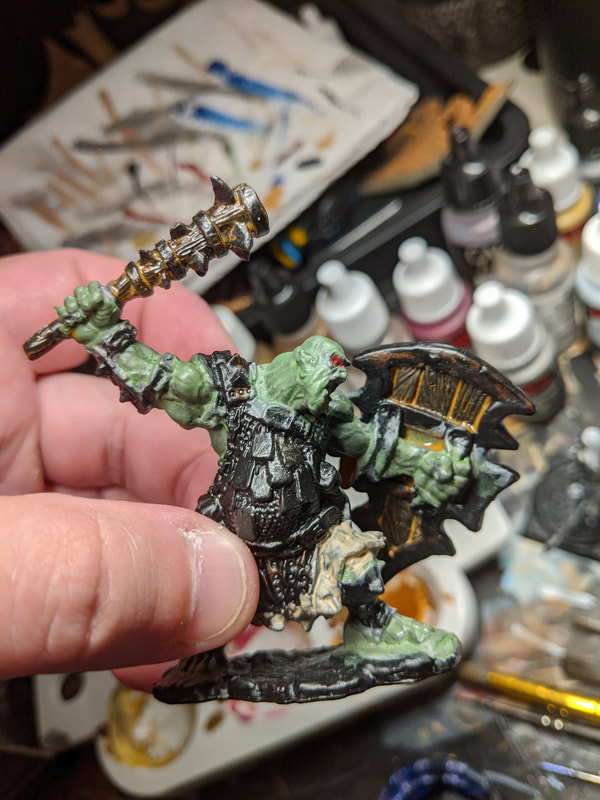
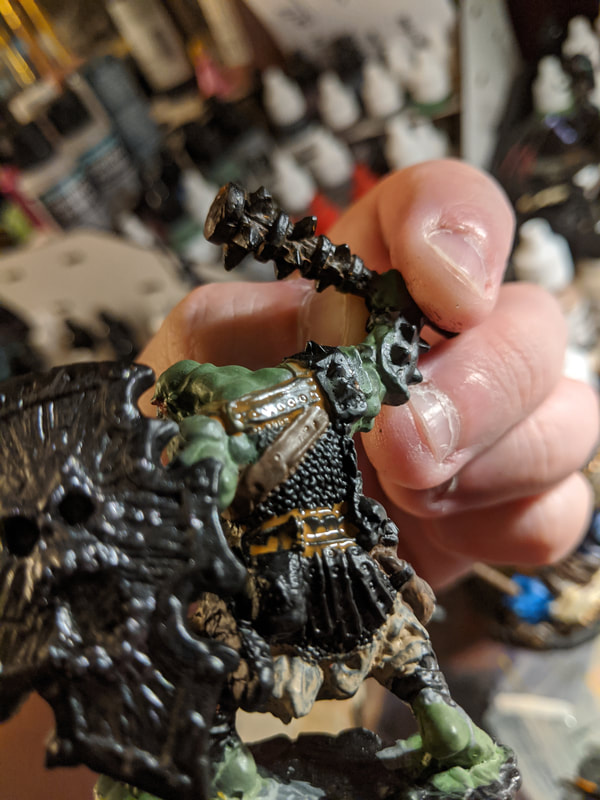
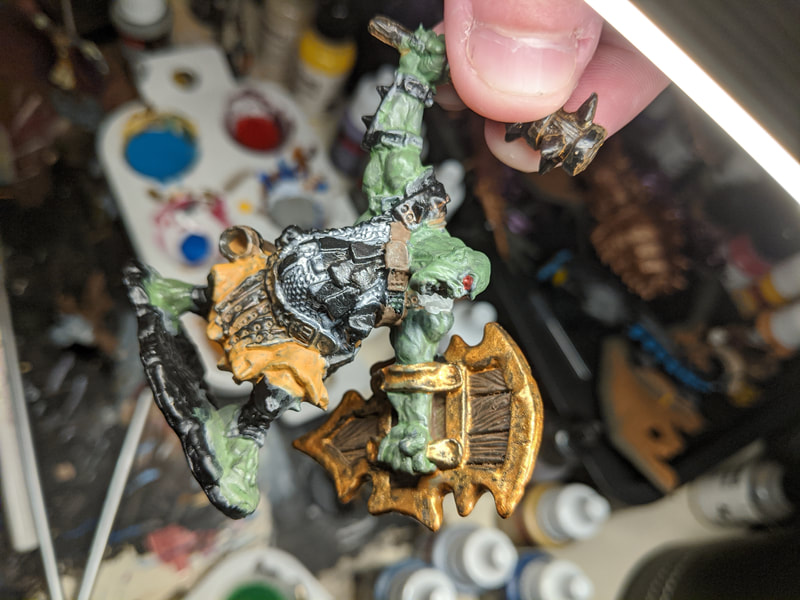
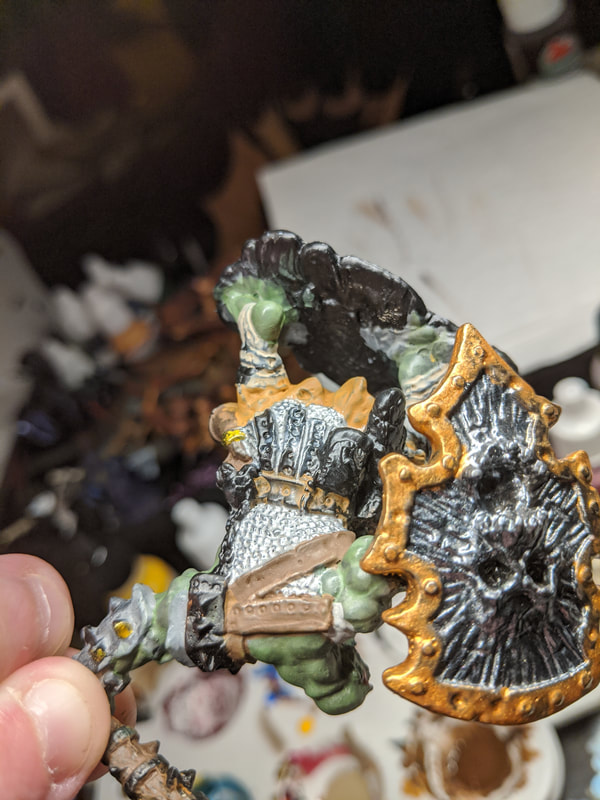
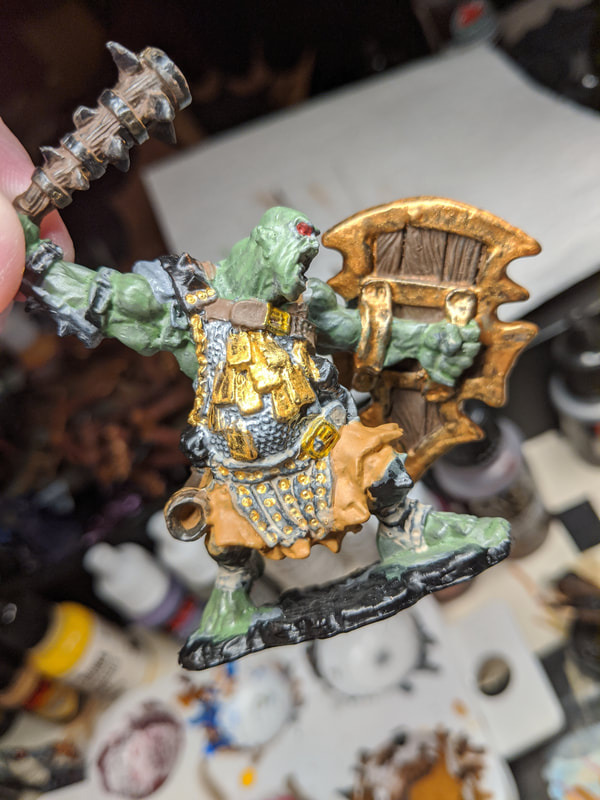
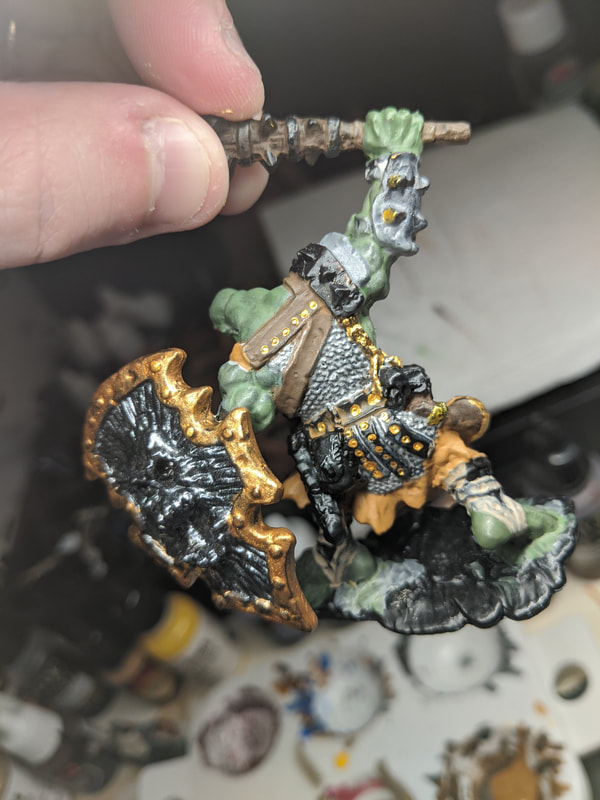
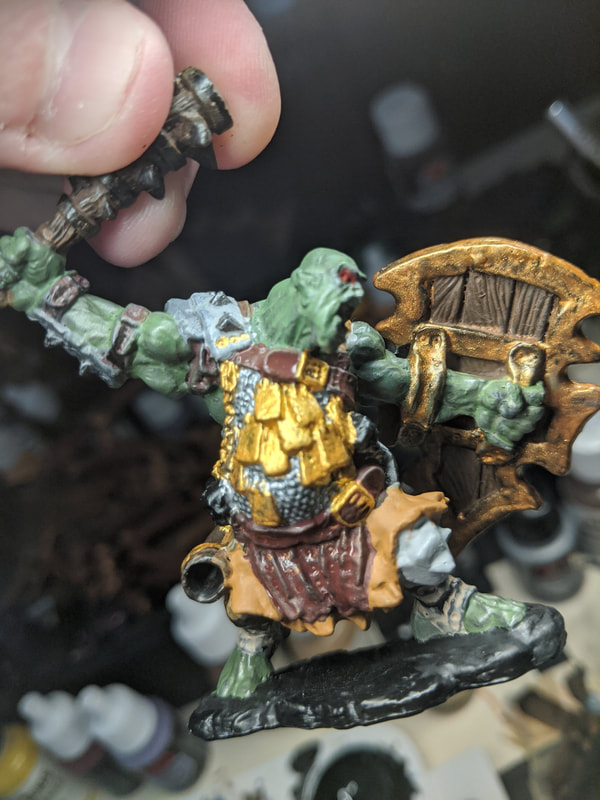
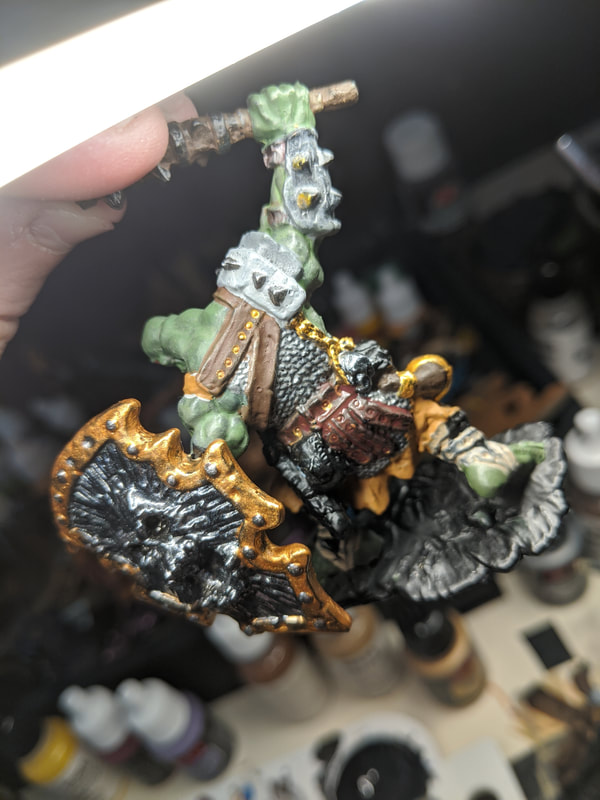
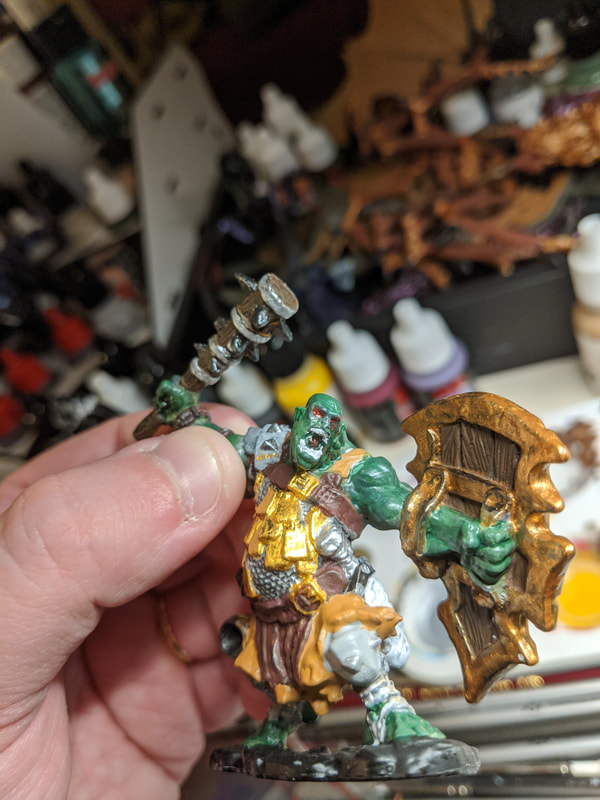


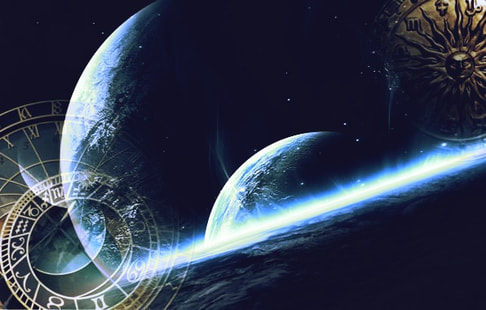
 RSS Feed
RSS Feed